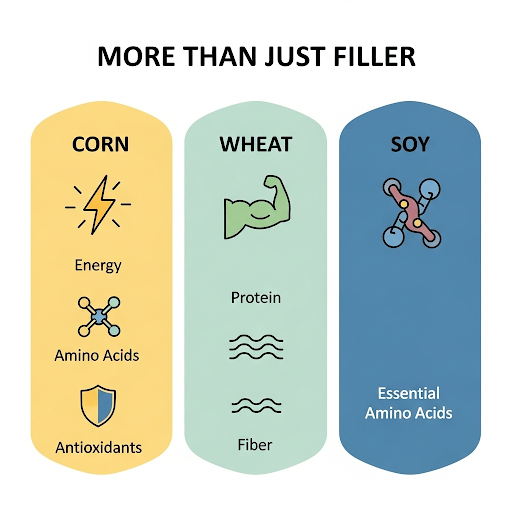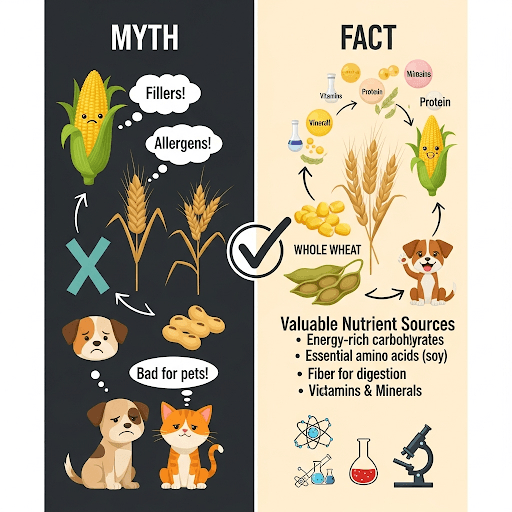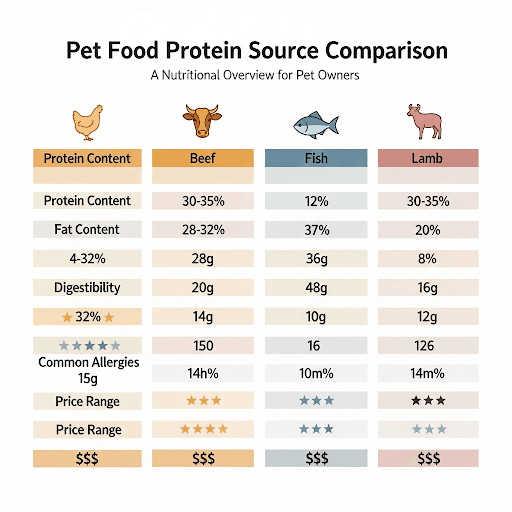Introduction
The term "animal by-products" on a pet food label is probably one of the most misunderstood and feared ingredients among pet parents. The name itself can conjure unappetizing images, leading many to believe they are buying inferior, low-quality food for their beloved companions. This concern is often fueled by clever marketing that proudly declares formulas "by-product free."
But what if this common belief is completely wrong? What if animal by-products aren't just safe, but are actually one of the most nutritionally appropriate and valuable ingredients for your dog or cat? It's time to look past the scary-sounding name and uncover the truth.
What Exactly Are Animal By-Products?
Let's start by clearing up the biggest misconception. According to the Association of American Feed Control Officials (AAFCO), which sets the standards for pet food in the US, animal by-products are the clean parts of slaughtered animals, other than muscle meat.
Think about what that includes. We're talking about incredibly nutrient-rich organ meats like the:
- Liver
- Kidneys
- Spleen
- Lungs
- Heart
Essentially, it's all the parts of the animal that are consumed in the wild but are less common on the dinner plates of most Americans.
More importantly, let's talk about what by-products in pet food are NOT. By AAFCO definition, they cannot include hair, hooves, horns, hide, manure, or stomach contents. The image of a pet food factory sweeping indigestible floor scraps into the mixer is a myth. Reputable pet food manufacturers use clean, healthy organ meats that provide concentrated nutrition.
The Nutritional Powerhouse Hiding in Plain Sight
From a nutritional standpoint, organ meats are far superior to the skeletal muscle meat (like chicken breast or steak) that humans prefer. In the wild, a wolf or wild cat will often eat the organs of their prey first. Why? Because their instincts tell them this is where the most valuable nutrition is.
These organs are a super-concentrated source of essential vitamins and minerals:
- Liver is a powerhouse of vitamin A (crucial for vision and immune function), iron, zinc, and multiple B vitamins.
- Kidneys are packed with vitamin B12, riboflavin, and iron.
- Lungs are a great source of iron and vitamin C.
- Spleen is extremely rich in iron and tryptophan.
By avoiding organ meats for dogs and cats, we are actually denying them some of the most nutrient-dense and biologically appropriate parts of an animal. We're letting our own cultural food preferences get in the way of providing optimal nutrition for our carnivorous companions.
So, Why the Bad Reputation?
If by-products are so great, why are they one of the most feared pet food ingredients? The answer comes down to two things: human perception and marketing.
First, the word "by-product" just sounds unappealing to us. We don't eat liver and kidneys as often as our grandparents did, so the idea of feeding them to our pets can feel strange or second-rate.
Second, some pet food brands expertly capitalized on this squeamishness. By creating "by-product-free" formulas and marketing them as superior, they successfully painted by-products as a cheap, undesirable filler. It was a brilliant sales tactic, but a disservice to pet nutrition education.
The focus should never be on a single ingredient but on the quality of the formula as a whole. A named by-product, such as "chicken by-product meal," comes from a specified source and is a quality ingredient. Navigating these marketing terms can be exhausting. A tool like our pet meal planner app cuts through the noise, helping you evaluate the overall nutritional value of a diet rather than getting stuck on a single, misunderstood ingredient. (For more tips on becoming a savvy label reader, check out our guide on [The AAFCO Statement: The Most Important Thing on a Pet Food Bag].)
Animal by-products are nutrient-rich organs, not low-quality fillers like hooves or feathers, which are prohibited by AAFCO regulations.
Conclusion: A Misunderstood Superfood
Far from being a sign of low quality, animal by-products are a safe, natural, and incredibly nutritious part of a pet's diet. They reflect what dogs and cats would eat in the wild and provide a more concentrated source of vitamins and minerals than muscle meat alone.
The next time you see "chicken by-products" or "poultry by-product meal" on a label from a reputable brand, don't be alarmed. Be confident that your pet is getting a wholesome meal packed with the nutrient-rich organ meats they need to thrive. True quality comes from a scientifically formulated, balanced diet—not from marketing slogans designed to create fear.


